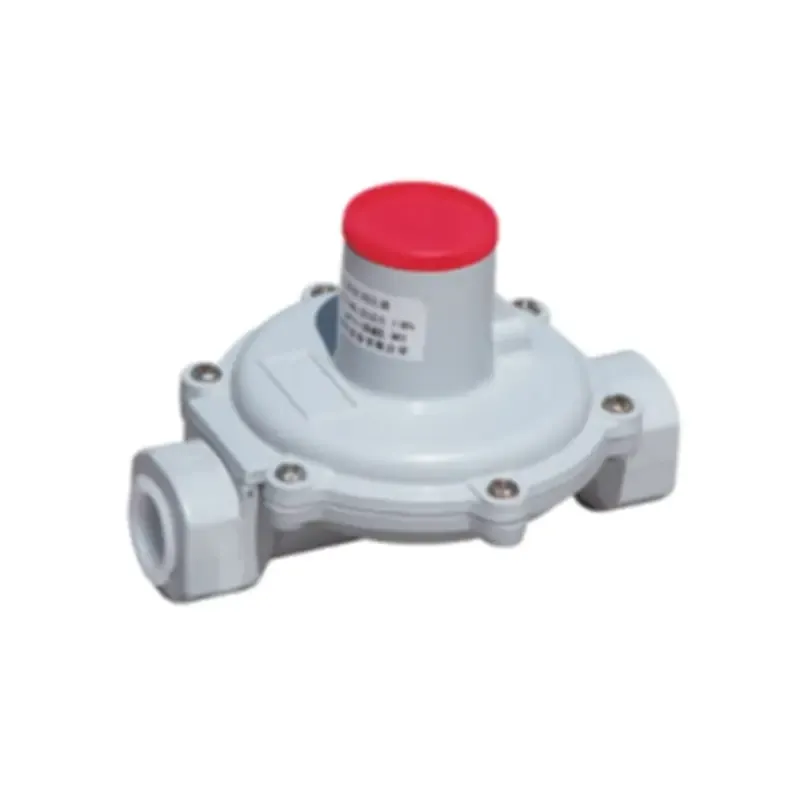
Oct . 21, 2024 11:34
Back to list
Gas Pressure Regulator Features and Applications in Industrial Systems
Understanding Gas Pressure Reduction Valves Function, Importance, and Applications
Gas pressure reduction valves, commonly referred to as pressure regulators, are crucial components in various gas distribution systems. These valves play a vital role in ensuring consistent gas pressure for safety and efficiency in a multitude of applications, from residential heating systems to large-scale industrial operations.
What is a Gas Pressure Reduction Valve?
A gas pressure reduction valve is a mechanical device that controls the pressure of gas flowing from a high-pressure source to a lower, more manageable pressure. These valves are designed to automatically adjust the pressure of the incoming gas to predetermined levels, ensuring a continuous and reliable supply of gas at the desired pressure.
Typically, a pressure regulator features a sensing element that detects the downstream pressure and a control mechanism that adjusts the flow of gas accordingly. As the demand for gas increases or decreases, the valve modulates to maintain a consistent pressure, preventing fluctuations that could lead to dangerous situations or equipment damage.
Importance of Pressure Regulation
Effective pressure regulation is critical for several reasons
1. Safety High-pressure gas can be hazardous. Regulating the pressure reduces the risk of explosions, leaks, and other dangerous situations. Pressure reduction valves help to create safe operating conditions for appliances and industrial equipment.
.
3. System Protection Many appliances, such as heaters, boilers, and ovens, have strict pressure requirements. An unregulated supply of high-pressure gas can damage these systems, leading to costly repairs and downtime. Pressure regulators help to protect these investments.
صمام تخفيض ضغط الغاز

4. Compliance In many regions, regulations require specific pressure levels for safety reasons. Using gas pressure reduction valves can help ensure compliance with local, national, and international safety standards.
Applications of Gas Pressure Reduction Valves
Gas pressure reduction valves are used in various applications, including
- Residential Systems In homes where natural gas is used for heating, cooking, or other purposes, pressure regulators ensure a stable supply of gas. They reduce the high pressure from the main gas supply line to a usable level for appliances.
- Commercial Installations Restaurants, hotels, and other commercial establishments that rely on gas for cooking and heating also use pressure reduction valves to maintain safe and efficient operations.
- Industrial Processes In industrial settings, gas pressure regulators are essential for equipment that requires precise pressure levels. Industries such as pharmaceuticals, petrochemicals, and manufacturing rely on these valves to maintain process efficiency and safety.
- Gas Distribution Networks Utility companies implement gas pressure reduction valves within their distribution networks to ensure that gas is delivered to consumers at safe and usable pressures.
Conclusion
Gas pressure reduction valves are indispensable components of modern gas distribution systems. Their ability to ensure safety, efficiency, and compliance makes them vital for residential, commercial, and industrial applications alike. As technology continues to advance, the design and functionality of these valves are likely to evolve, offering even greater reliability and performance.
Understanding the significance of gas pressure reduction valves is crucial for anyone involved in the design, installation, or maintenance of gas systems. Proper selection, installation, and maintenance of these valves can lead to safer operations, reduced costs, and enhanced system performance. Investing in quality pressure regulation solutions ensures that gas is delivered effectively while minimizing risks and promoting efficiency across various applications.
Next:
Latest news
-
Safety Valve Spring-Loaded Design Overpressure ProtectionNewsJul.25,2025
-
Precision Voltage Regulator AC5 Accuracy Grade PerformanceNewsJul.25,2025
-
Natural Gas Pressure Regulating Skid Industrial Pipeline ApplicationsNewsJul.25,2025
-
Natural Gas Filter Stainless Steel Mesh Element DesignNewsJul.25,2025
-
Gas Pressure Regulator Valve Direct-Acting Spring-Loaded DesignNewsJul.25,2025
-
Decompression Equipment Multi-Stage Heat Exchange System DesignNewsJul.25,2025

